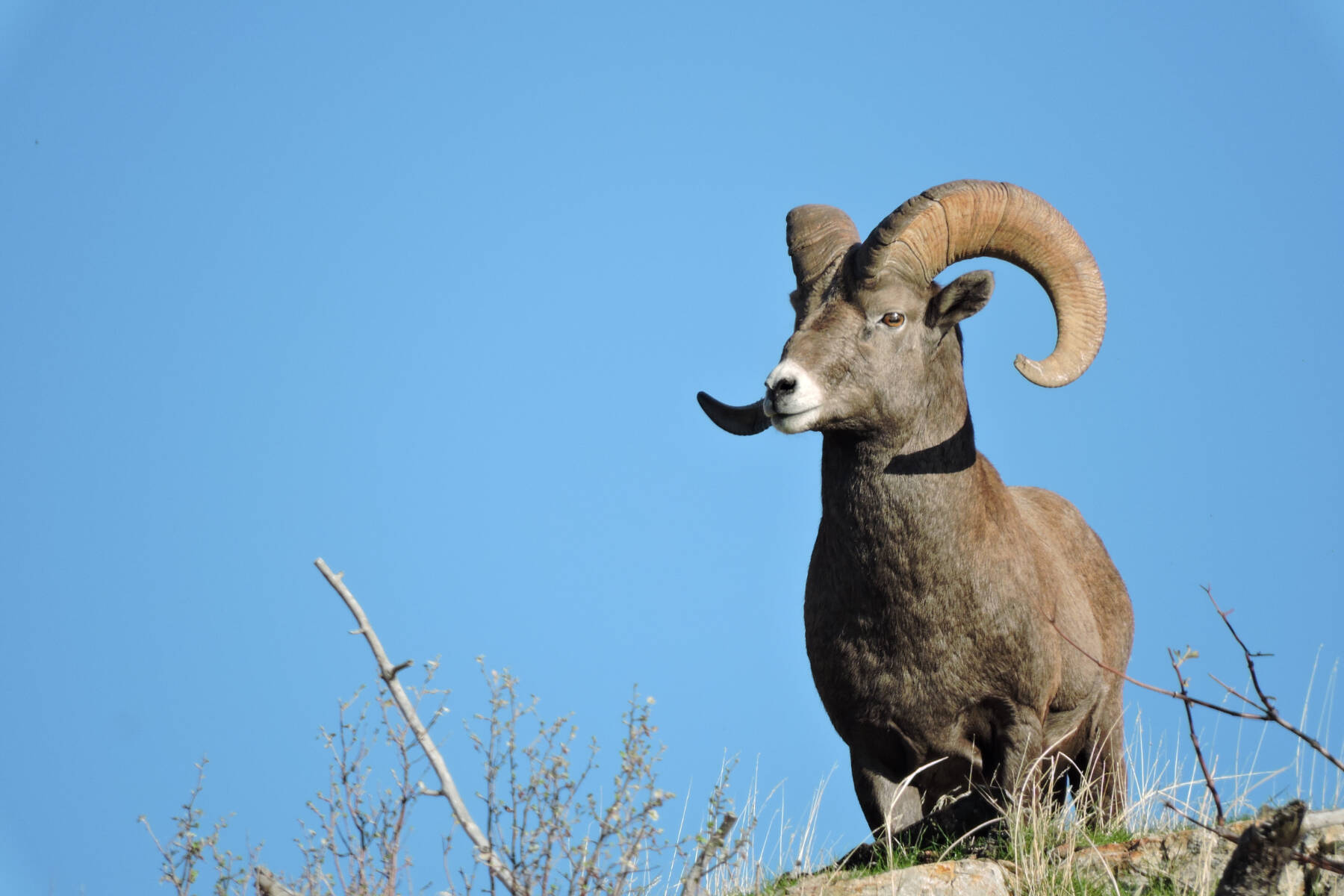Wild sheep populations are on the downturn in the Okanagan, prompting a call on the province to protect them from diseases transmitted by domestic animals.
The Okanagan Nation Alliance (ONA) says the local populations of yilíkʷlxkn (wild sheep) are in “continuous decline,” and attributes the decline to diseases transmitted by domestic sheep and goats.
Bighorn sheep are on the blue list in B.C., meaning they are at risk but are not yet extirpated, endangered or threatened.
The ONA’s Chiefs Executive Council is calling on the B.C. government to partner with the Syilx Nation in developing legislation that would provide an “effective means of separation” between wild and domestic sheep and goats.
The ONA says managing to separate wild and domestic sheep and goats would ensure healthy wild sheep populations, upholding Indigenous principles of sustainability and sustenance.
“Wild sheep need us to respect these principles for generations to come,” the ONA said in a media release.
The ONA said wild Bighorn sheep in the Syilx territory are at a continued risk of exposure to diseases including Mycoplasma ovipneumoniae (M.ovi), Hemorrhagic Disease viruses such as Bluetongue and Epizootic Disease viruses, and Psoroptic mange (Psoroptes cuniculi). It notes that of these diseases, M.ovi is the most difficult to manage.
M.ovi is a bacterial strain commonly found in the nasal cavity and sinuses of domestic sheep and goats. When it is transmitted from domestic hosts to wild sheep, sudden pneumonia outbreaks can occur, leading to significant population decline often followed by years of low lamb birth and survival rates. The ONA says the effects of this domestically sourced pathogen can last decades and prevent wild sheep recovery.
“It is our duty and sacred responsibility to defend the tmixw (all living things) who cannot speak for themselves. To see yilíkʷlxkn suffering from a disease that is perpetuated by humans and one that simple measures can prevent is inexcusable, and we must do all that we can to prevent further suffering,” said Con. Jordan Coble, ONA natural resource committee chairman.
“We cannot stand by and watch as our yilíkʷlxkn lambs continue to die every year. We need new legislation developed in true partnership and collaboration with the Syilx Nation and member communities, that will facilitate the required testing and separation of domestic flocks from yilíkʷlxkn.”
The ONA notes that while M.ovi treatment research is ongoing, it is widely recognized that there are currently no effective treatments for it in wild sheep populations, nor are there preventative measures other than phyiscal separation from domestic sheep and goats.
Taking measures on a famr-by-farm basis such as fencing projects on private land can be costly, challenging to implement and “susceptible to exploitation by landowners when not guided by overarching legislation,” the ONA said.
“Even a single contact event with a domestic sheep or goat can reinfect a yilíkʷlxkn population. Without domestic industry regulation, the risk of contact and catastrophic die-offs will never be addressed adequately,” the ONA said.
The ONA notes that wild sheep are an integral part of Syilx culture that need to be protected.
The B.C. government has a webpage dedicated to information on the risk of M.ovi to wild sheep and goats. The webpage notes wild sheep will periodically leave their herd and may interact with domesticated sheep on their forays. The M.ovi disease can be transmitted during these interactions via nose-to-nose contact.
The webpage notes that domestic and wild sheep have “very different immune systems and tolerance levels. It contains information about testing domestic animals for M.ovi, but does not mention physical separation strategies which the ONA is calling for.
READ MORE: Action plan launched to protect Okanagan wildlife corridor
READ MORE: Beloved Penticton Elder Grace Greyeyes dies after battle with cancer

